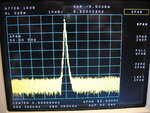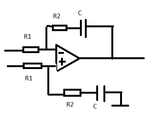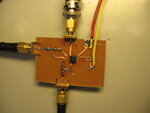vfurlan
Full Member level 2
I designed a active filter for PLL but the loop is out of lock.
Parameters of my PLL-VCO are
VCO gain Kvco = 60 - 80MHz/V
Phase detector gain Kv = 0.32 rad/V
loop bandwidth Fc = 10 000Hz
N = 22
φ = 45
I'm using AD 8622 OP-AMP.
R1 = 312kΩ (used 330k)
R2 = 15.9k (used 15k)
C = 1nF
I use a 250MHz signal and N = 22, so VCO oscillates at 5.5GHz.
On schematic.png is a filter design, on filter.jpg you can see my filter, and on 5903.jpg the VCO respons.
Can you advise me what to do?
Thank you
Parameters of my PLL-VCO are
VCO gain Kvco = 60 - 80MHz/V
Phase detector gain Kv = 0.32 rad/V
loop bandwidth Fc = 10 000Hz
N = 22
φ = 45
I'm using AD 8622 OP-AMP.
R1 = 312kΩ (used 330k)
R2 = 15.9k (used 15k)
C = 1nF
I use a 250MHz signal and N = 22, so VCO oscillates at 5.5GHz.
On schematic.png is a filter design, on filter.jpg you can see my filter, and on 5903.jpg the VCO respons.
Can you advise me what to do?
Thank you



